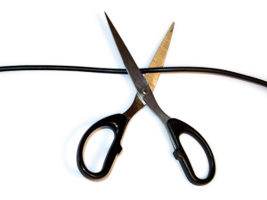
In a previous post on in ear monitors, I described how efforts to remove wedges from stages have helped simplify the job of getting a good front-of-house (FOH) mix for the sound tech. In this post I want to expand on the notion of reducing stage volume.
I am not a sound tech, but to me, I would think anything that can be done to simplify the FOH mix for the sound engineer would be a good thing. Removing or minimizing the variable of stage volume therefore is helpful. This is because stage volume can compete with the FOH mix and is usually out of the sound engineer’s control.
If it were up to me (and because of this), I would do everything possible to contain large sound sources on stage. I would put all acoustic drums in sound isolating cages. Yes I understand the cage may not be visibly appealing and may even be demeaning to the drummer, but to me the end (getting a good FOH mix) justifies the means (caging the drummer). The cage also can affect the chemistry of the band on stage, but this can be handled with practice in my experience.
Also, I would have all instrument amplifiers either off the stage or isolated. It is not that I don’t appreciate the sonic imprint that a cranked tube amplifier can impart – far from it. It is that I appreciate the interference that a cranked tube amplifier on stage can have on the FOH mix. Especially when trying to mic a cello several feet away.
Think of it from the sound tech’s perspective for a second. He is trying to mix for the room and is dealing with room resonances, hot spots, instruments that are occasionally clipping channels, mic’s that might be flakey and then it happens… a guitarist turns up his amp on stage louder than what is controllable for the sound tech. While the amplifier might be mic’ed (and thus he can compensate somewhat with the mixing board), the sound engineer may have to turn down this channel to minimum. There isn’t much the sound engineer can do at this point. The sound tech and the guitarist are now fighting for control of the FOH mix and the guitarist may be oblivious to the situation.
One benefit of having an amplifier off stage away from the musician is the musician can’t reach over and change settings. As a musician I know this may be seen like a limitation, but I look at it from a different perspective. The time for making tweaks to a guitar tone, at least large changes, is NOT during a performance. The responsibility for tweaking a guitar’s tone to counteract the sonic affect of the room is largely on the sound tech’s shoulders. Plus the sound tech generally has much more control to handle this (depending on the equipment and skill levels involved). This isn’t a hard and fast rule but I find it generally to be true. Because of these reasons I prefer to see guitar amplifiers far away from the stage. (I have developed a product to help with keeping amplifier’s off stage, the effects loop snake EL-SNAKE)
One exception to the rule of amplifiers on stage can be bass amps (primarily to help the bassist/drummer feel the low end). I find this is only helpful when there are no subwoofers or if the sound system is underpowered. However, as a bassist I still prefer relying on the sound tech’s ability to get a good mix and not use an amplifier on stage. Having a bass amp blasting at my knees while wearing in ear monitors never convey’s much of my tone anyway. If anything, I prefer to play close to the subwoofer as possible if I cannot feel the bass. So I haven’t used a bass amplifier on stage in years. (I use a combination tuner and mutable DI that I designed: the TDI)
I think if performers (myself included) are conscious of the effect stage volume has on the sound engineer’s job, we can go a long way in helping get a great FOH mix.







